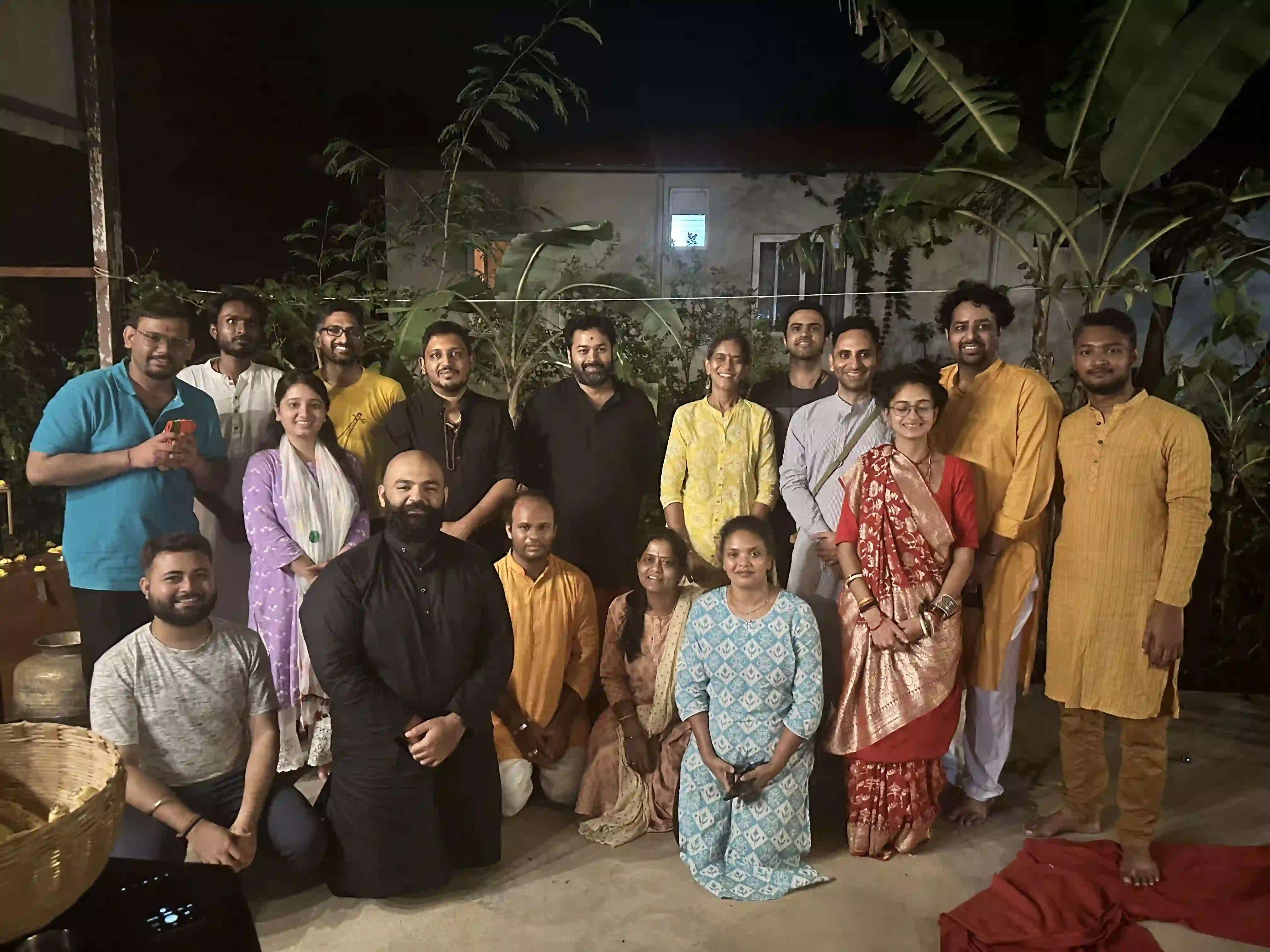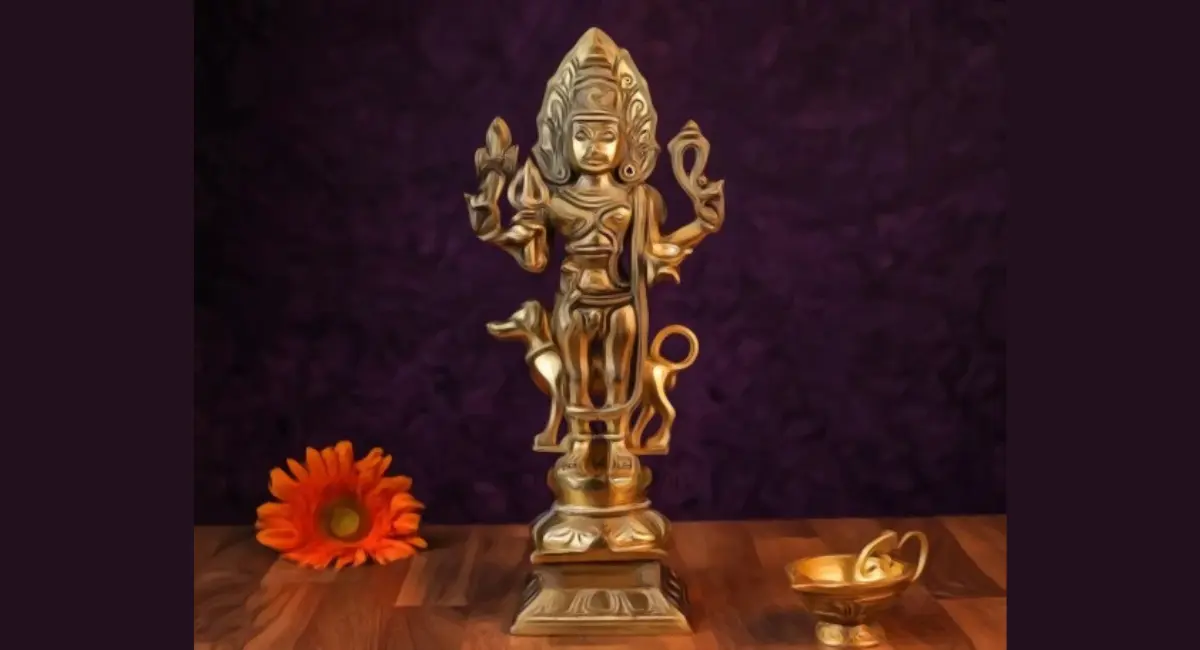
share this article
Who is Bhairava?
Bhairava or Kālabhairava, is often anointed as kṣetrapāla in Śiva and Devī temples. Each Śakti pīṭha has a Bhairava associated with it. The tale of Kālabhairava’s incarnation is recounted in the Śiva Purāṇa. As often done in our Purāṇas, great truths are conveyed in stories and captured in the form of deities. In a moment of ignorance and arrogance, Brahmā declared himself the supreme being and condescended to Śiva. In response, Śiva manifested Kālabhairava, a radiant figure, who, with the delicate touch of his left hand’s nail tips, severed Brahmā’s ego-driven head, thereby humbling and divesting him of his pride.To repent for the sin of brahmahatyā, Kālabhairava roamed the three worlds until he reached Kashi. Since then he protects and blesses the seekers as Koṭvāl of Kashi.1
But it is in Kashmir Śaivism, where he takes the central role as parābhairava, the highest manifestation of the divine. Out of 92 Śaiva āgamas, 64 are considered Bhairava śāstras which are advaitik in proposition and are considered supreme. Bhairava, as the name indicates, performs all three aspects of Divine: (1) bha indicates bharaṇa or maintenance of the universe; (2) ra indicates ravaṇa or withdrawal of the universe; (3) va indicates vamana or projection i.e., manifestation of the universe.2
In practice, Bhairava is the form of Śiva when he enters cremation ground. Tantraloka states that:
देवो ह्यन्वर्थशास्त्रोक्तैः शब्दैः समुपदिश्यते।
महाभैरवदेवोऽयं पतिर्यः परमः शिवः॥९४॥Devo hyanvarthaśāstroktaiḥ śabdaiḥ samupadiśyate|
Mahābhairavadevo’yaṁ patiryaḥ paramaḥ śivaḥ ||94||The Divine has been referred to in the scriptures by significant words.
Tantraloka - Chapter 1 - Śloka 94
He has been indicated by the word Mahā Bhairava who is the Supreme Śiva Himself.
Bhairava, the protector deity, is inherently fierce in nature; however, he also embodies another aspect—as a Guru.
He is considered as the Guru in Śaiva and Śākta tāntrika-mārga. One cannot traverse the tāntrika-mārga without the blessings of Bhairava. He is the one who bestows the secret knowledge of tantra to the seeker as well as protects them in their spiritual journey. It is said that consistent adoration or dhāraṇā, of Bhairava guides the sādhaka toward encountering an authentic Guru in the physical realm.
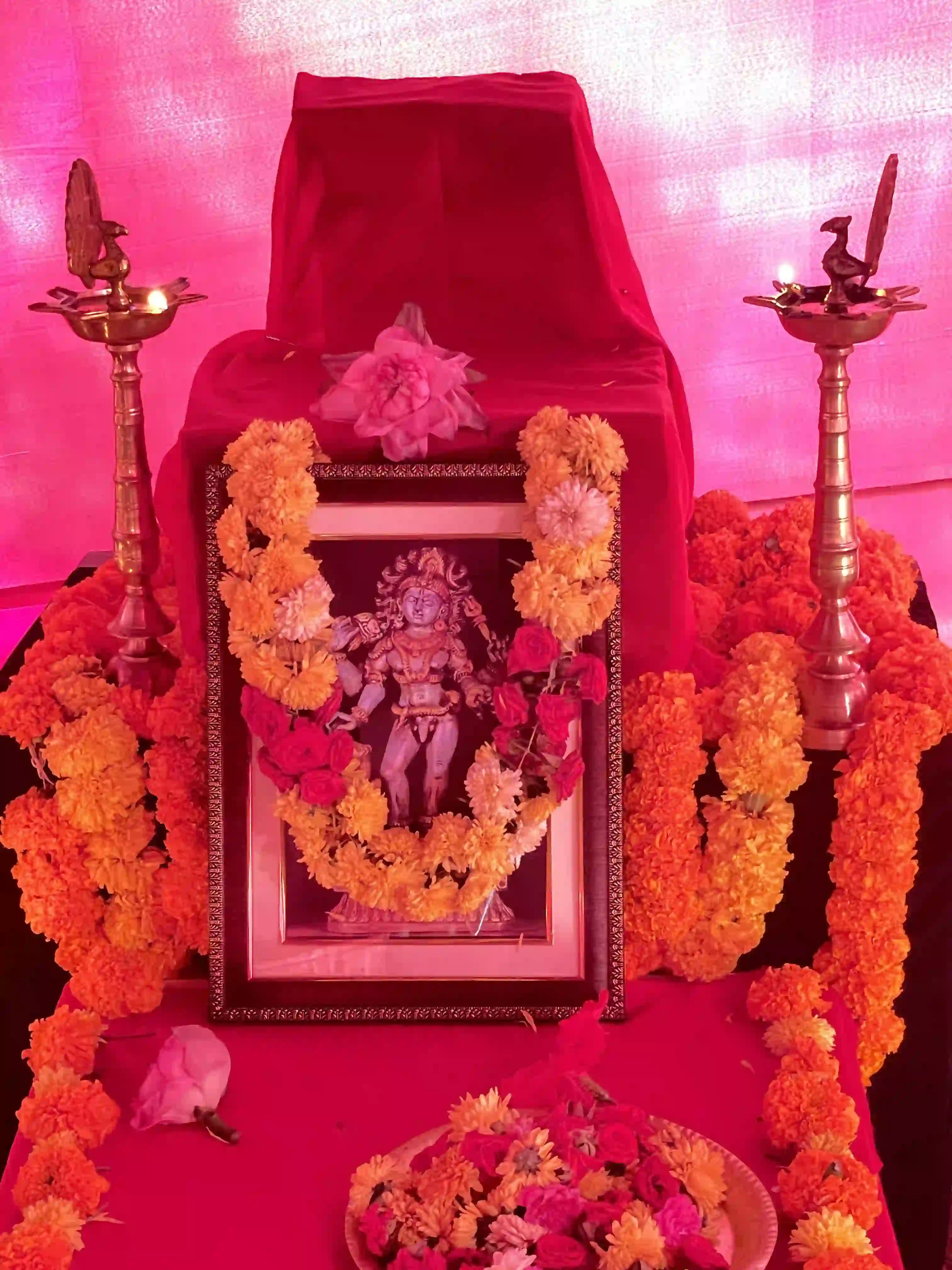
Saṅkalpa: Dharma Rakṣaṇa
As often mentioned, unity is the strength in the Kali Yuga:
संघे शक्ति कलियुगे \ Saṅghe Śakti Kaliyuge
The collective sādhanā and saṅkīrtana for protection of Dharma are crucial for Bharātavarṣa in current times. Hindu society has been facing multifold challenges from cultural, political, and national realms to the street levels. An utter lack of both Svayambodha and Śatrubodha is at the root of our inability to deal with these challenges.
At times like this, invocation of Bhairava Baba is crucial to build the strength needed to protect ourselves as well as to vanquish the enemies.
It cannot be put more beautifully than these lines by Śrī Ādi Śaṅkarācārya himself:
धर्मसेतुपालकं त्वधर्ममार्गनाशकं
कर्मपाशमोचकं सुशर्मदायकं विभुम्।
स्वर्णवर्णशेषपाशशोभिताङ्गमण्डलं
काशिकापुराधिनाथकालभैरवं भजे ॥dharma-setu-pālakaṃ tvadharma-mārga-nāśakaṃ
karma-pāśa-mocakaṃ su-śarma-dāyakaṃ vibhum |
svarṇa-varṇa-śeṣa-pāśa-śobhitāṅga-maṇḍalaṃ
kāśikā-purādhinātha-kālabhairavaṃ bhaje ||He who is the protector of dharma and the destroyer of adharma,
Kālabhairava Aṣṭaka, Śloka 5
He who liberates us from the bondage of karma and thus bestows auspiciousness,
His golden form shines with a garland of serpents around his neck,
That Kāla Bhairava, the Lord of Kashi, I worship.
There have been calls from different sampradāyas and Gurus to carry out this resolution which will strengthen the spiritual core of the society.
Through their ‘Ishta Dhyana’ initiative, Sanatana Siddhashram in Bolpur endeavors to propagate various iṣta devatā upāsana practices to different parts of the country.
The 3rd edition of Ishta Dhyana - Bhairava Dhāraṇā was held in Hyderabad from 25th Aug 2023 to 27th Aug 2023, led by Śrī Rajarshi Nandy and Śrī Ramachandra Roddam.
A saṅkalpa was taken to offer collective japa and homa for protection of Dharma and destruction of Adharma.
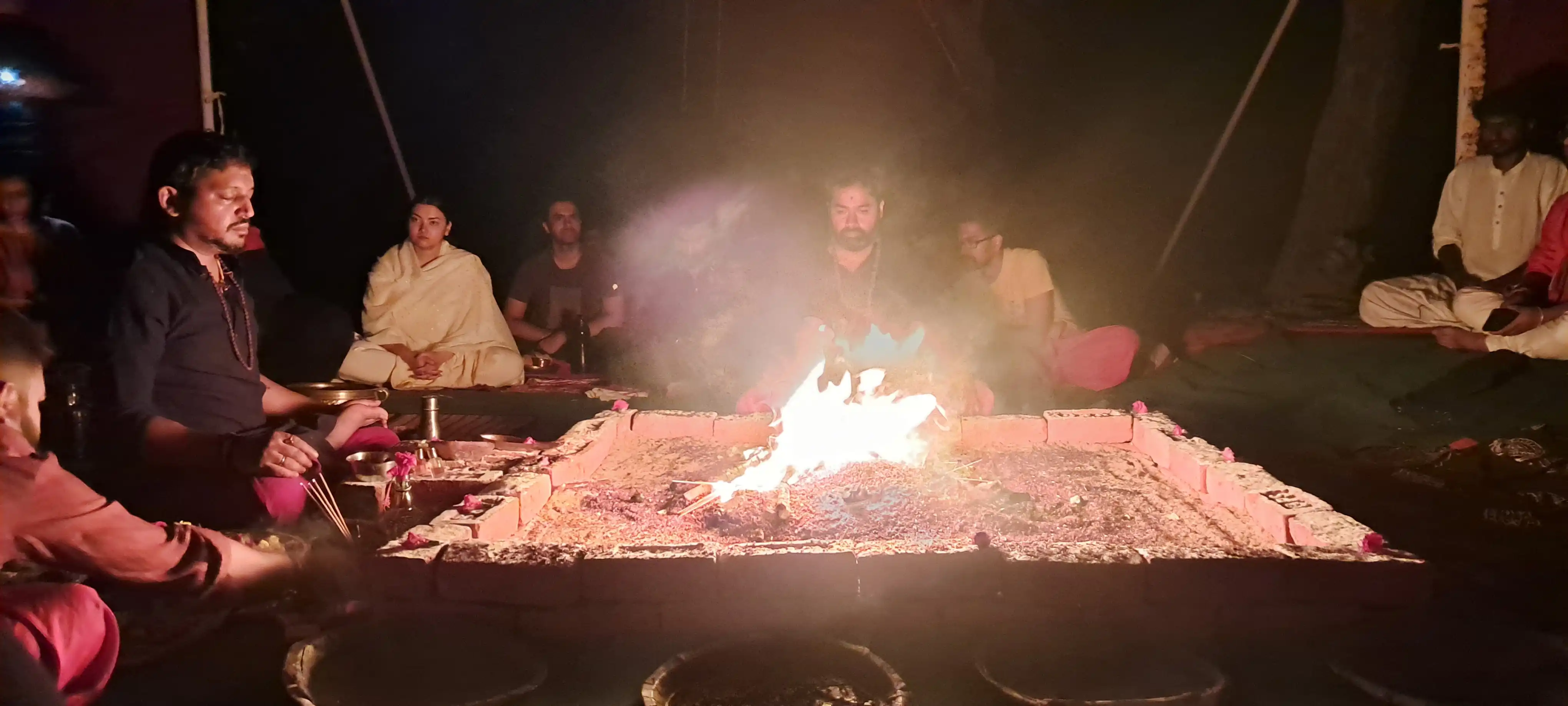
Program
Bṛhat functions in the realms of Culture Creatives, Policy Research, and Leadership Development. Programs like Nītividhāna, where Bṛhat partners with universities, bear the torch for learning and application of Indic policy and governance. Through these, we bring key society-shaping methodologies to young minds who will soon join the work force and shape the texture of our civilization itself. Initiatives like Rāmāyaṇa Kalpavṛkṣa and Bhārata Uvāca bring together the best thinkers and speakers, who can interact with even school children, on a sacralized platform where Indic tradition, music, and dance are integrated to generate a most creative ecosystem.
Bhairava Dhāraṇā tapped into the core of our purpose. It directly put our focus on the sacred, and that too for the saṃrakṣaṇa of Dharma itself. It did this for not only the participants, but also the organizers and volunteers.
This retreat took place in the open kṣetra of a farm, in a rural district just outside the busy Hyderabad metroplex. Participants were one with the pañca mahābhūtas and weathered through them, all as part of their sādhanā taken through the saṅkalpa. Though the sādhakas slept in dorms and ate in an open yet covered pavilion - the daily japa, Question and Answer sessions, and finally the Bhairava homa itself were all conducted within a paṇḍal raised specifically for this intention. Heat, mosquitos, rain - walking increased distances - earth, water, fire, space, ether - all of these were a part of the daily sādhanā and experience.
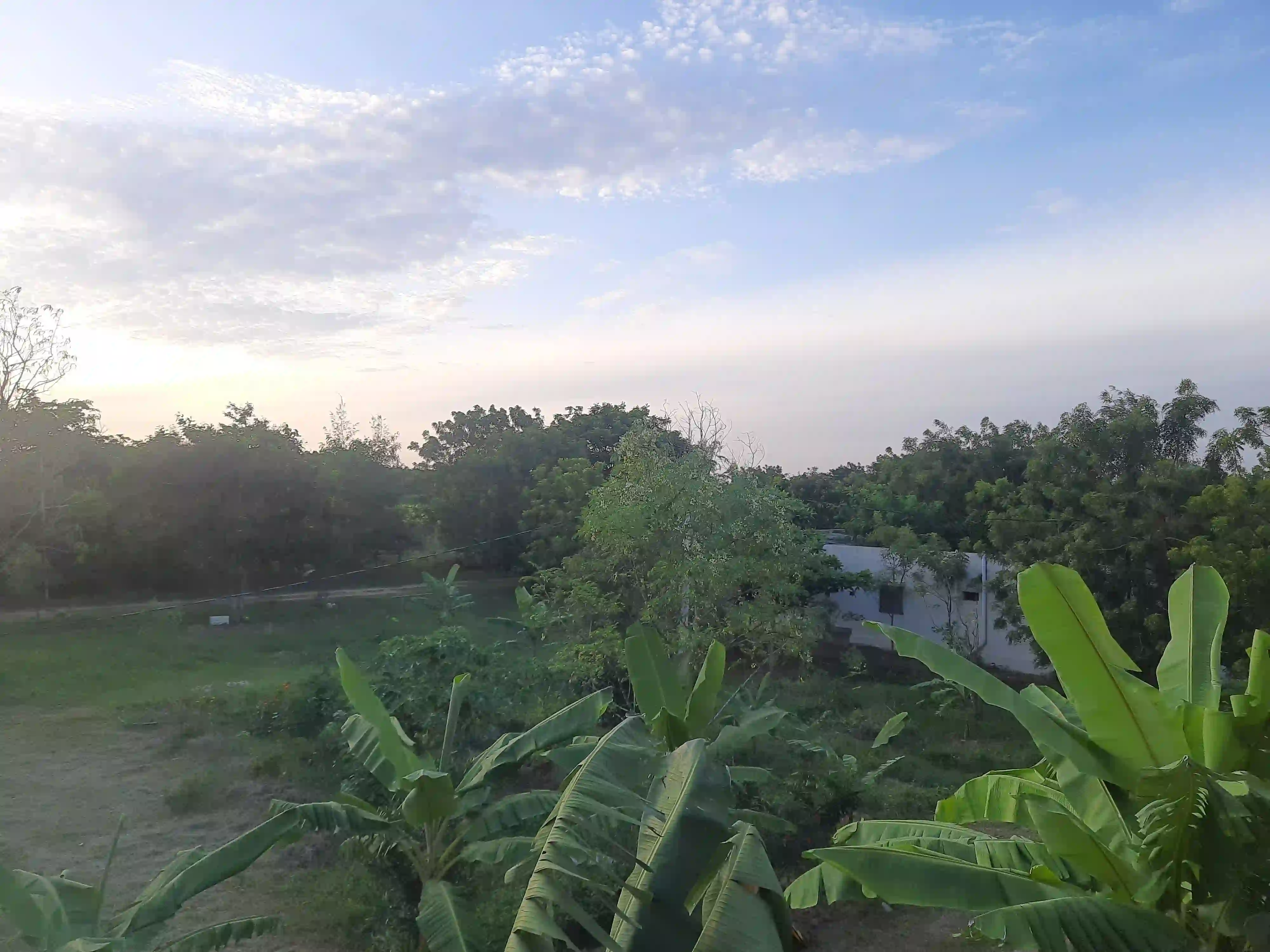
These elemental factors were not filtered out to create a sterilized and sheltered environment. They were integrated into the sādhanā, as they should be.
All these factors culminated in lived experience during the 4 days of the retreat. The volunteers who helped coordinate the program detail their memories and the impact of the initiative below.
Sevā - A Personal Account
Before the Dhāraṇā commenced, in his address to both participants and volunteers, Śrī Ramachandra ji had emphasized that for the volunteers, seva was to be our primary and utmost priority. Each of us subsequently went in with a heart eager to serve both Bhairava and his sādhakas.
However, we certainly did not estimate correctly, the sheer physical and mental grit it would demand and that it would bring us face to face with the impurities that reside within the recesses of our own being.
As we awakened at the crack of dawn and crept into slumber only at midnight, for the next three days, the joyful yet challenging process of serving the devatā unfolded for us. From ensuring the space created for the Dhāraṇā was cleaned thrice a day, that the sādhakas and the ācāryas wanted for nothing, and with us running around in rain and shine to make the required arrangements to facilitate a wholesome experience; it was a time like never before.
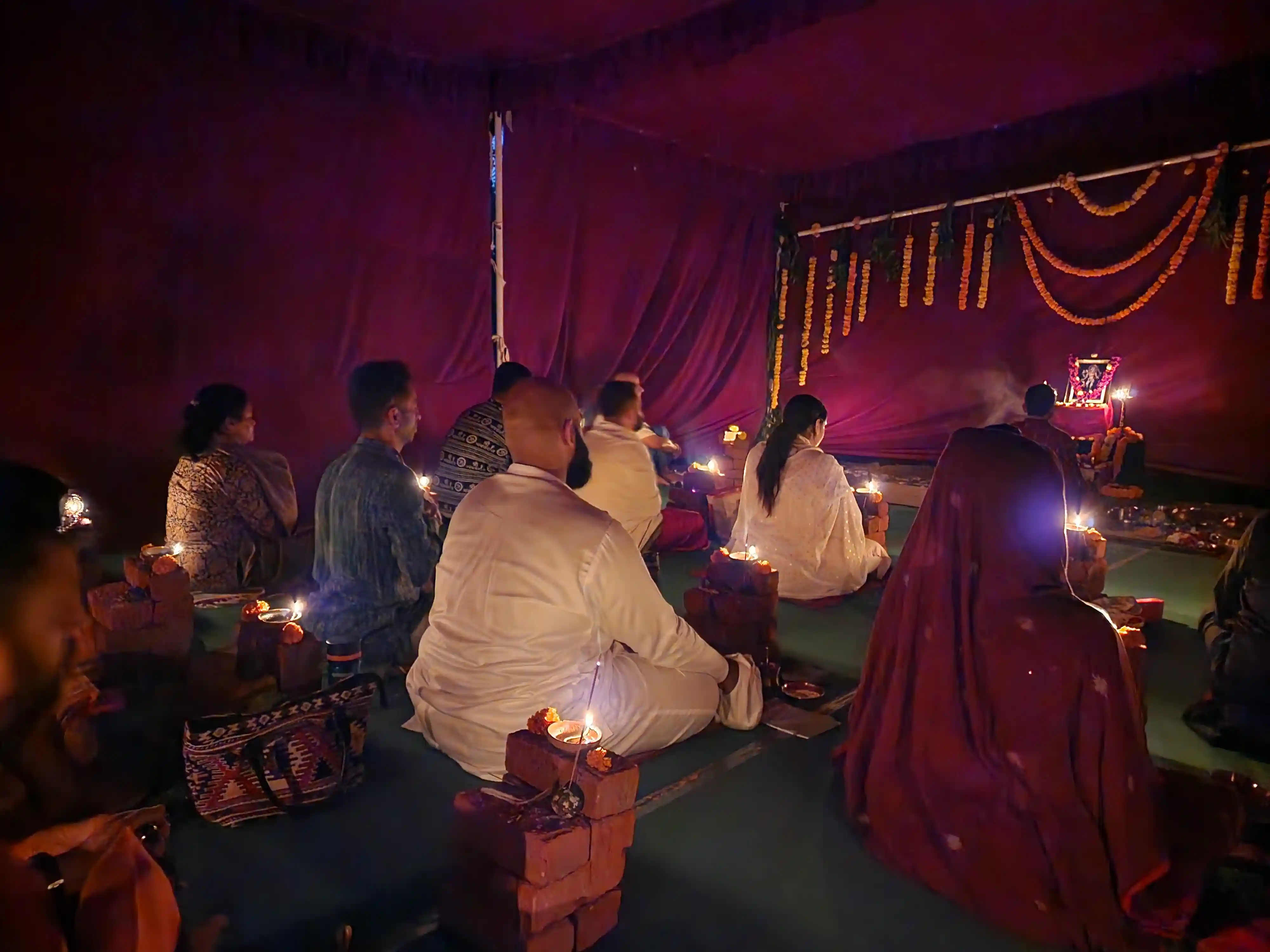
The efforts that go into making the process of pūjā such an aesthetically pleasing experience - these efforts made their mark as we threaded garlands, set up the altar and the surrounding space with great care, and ensured every item essential for its completion was fresh and available on each day. By the time the japa for the day began, we could only marvel at how effortlessly beautiful the final picture looked and was strengthened by the presence of the great deity, to whom every single effort was dedicated.
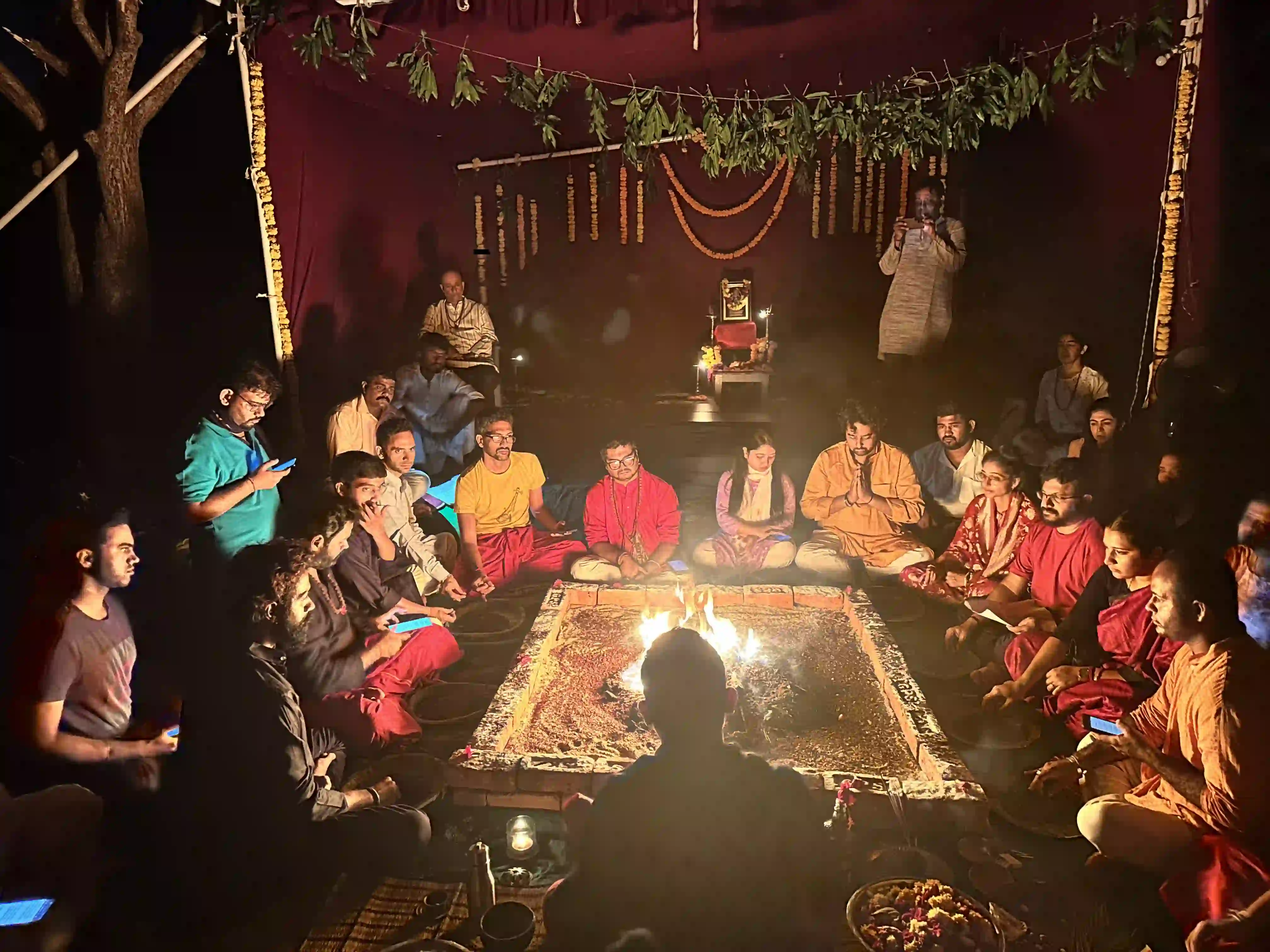
In the Bhagavad Gītā, Śrī Kṛṣṇa speaks about the essentiality of citta-śuddhi in any form of sādhanā, and specifically so for karma yoga sādhanā. The mind in its various dimensions carries layers of imprints brought forth from across multiple janmas. These imprints manifest as impurities or inherent tendencies in mind, body and behavior.
It is only relentless sādhanā as sevā of the devatā that can gradually untie these hard knots within us. One undertakes a saṅkalpa to serve Bhagavān and willingly accepts the hardships that unfold as iśvara-prasāda. This eventually results in the shedding of rāga-dveśa (likes-dislikes) and other physical impediments as the mind is purified in the fire of niṣkāma sevā and bhakti. Hence, sādhanā and sevā are also tapasyā.
At Bhairava Dhāraṇā, the fatigue only hit us as we rested at night. Bhairava krpā kept us going through the day even as our capacities were tested to the limits. The cause here was Dharma-rakṣaṇa. And the means to that was to ensure that the experience of being in the premises was a fulfilling one for participants and organizers alike, such that everyone would be able to walk their path with ease and least worry. Nothing was greater than this.
Bhairava Dhāraṇā brought each participant, volunteer, and organizer to the fronts of the internal and external conflict we go through on a daily basis. Smaller struggles like, “Do I have enough stamina to make it through today?” as well as larger issues like, “What exactly is happening to our sacred kṣetras across Bhārata, and how can we protect them better?” - all such sources of doubt and the responsible solutions which are needed to address these, all were strengthened with the resolve of sādhanā.
Sādhanā is the only ultimate process that we can unhesitatingly rely on to take us forward. And sādhanā it is that shall protect and uplift the individual and collective citta of this civilization.
Jai Bhairava!
